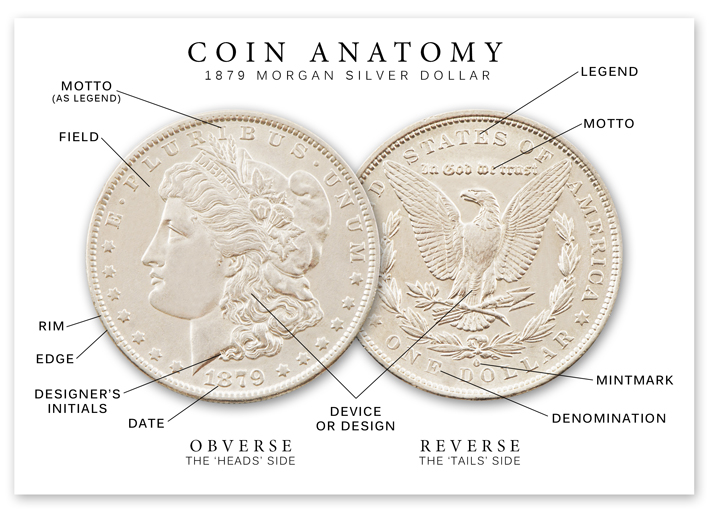DEVICE - The principal element, such as a
portrait, shield or heraldic emblem, of a coins reverse or obverse design.
DENOMINATION - The different values of
money. U.S. coins currently are made in the following six denominations: cent, nickel, dime, quarter, half dollar and dollar.
EDGE - the outer border of a coin, considered
the "third side" (not to be confused with "rim").
Some coins feature lettering, reeding, or ornamental designs on their edges.
ENGRAVER or DESIGNER - the person who engraves the
design of a coin onto the die.
FIELD - the flat areas surrounding the raised design
elements on a coin.
|
|
MINT - A) the Government Branch where coins are printed, B) Uncirculated (brand new), or C) the act of making a coin.
MINTMARK - Symbol, letters or monogram that indicate the mint where the coin was struck.
MOTTO - a word, sentence or phrase inscribed on a coin to express a guiding national principle. For example, "E Pluribus Unum" inscribed on all U.S. circulating coins is Latin for "out of many, one."
OBVERSE - the front of a coin.
REVERSE - the back of a coin.
RIM - Raised border around the circumference of a coin.
|

